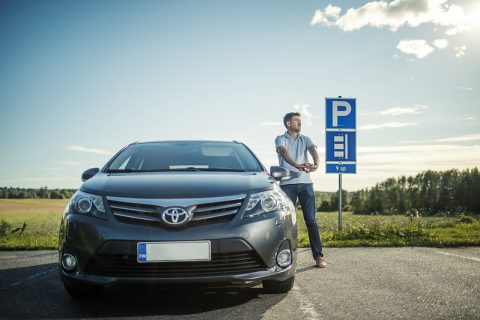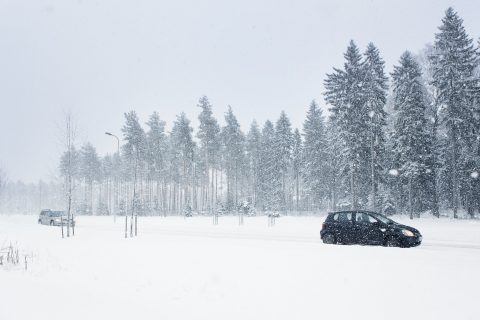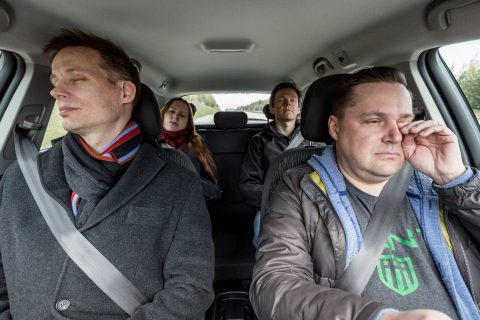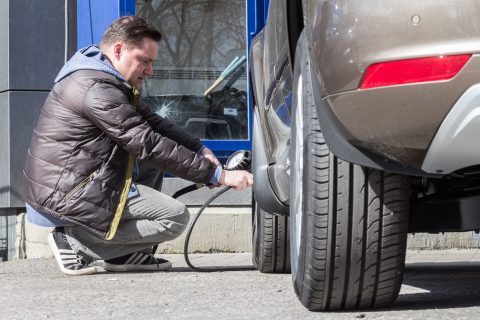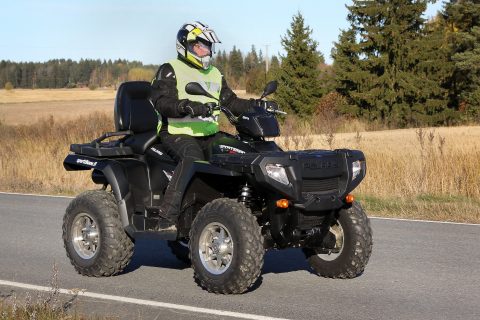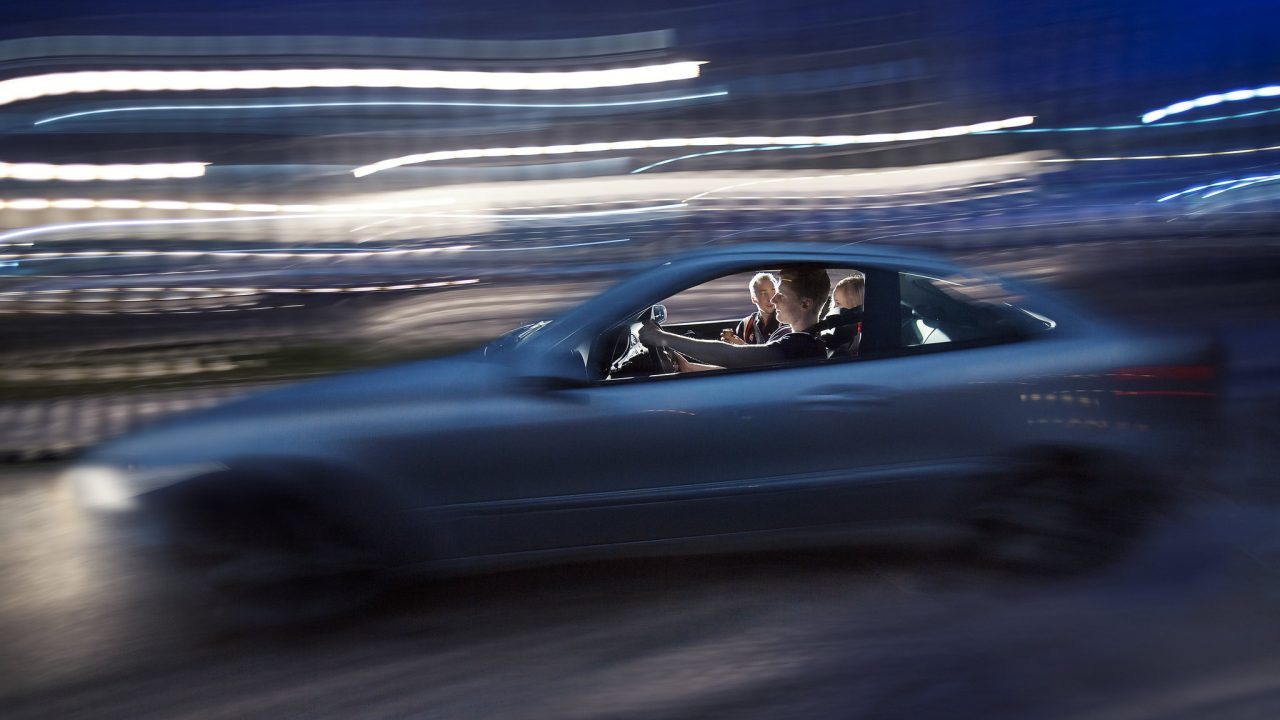
Alcohol and traffic
The alcohol that has been consumed impairs driving ability and increases the risk of accidents even if the limit for drink-driving is not exceeded. The use of alcohol increases reaction times, impacts concentration and affects judgement, which significantly increases the risk of traffic accidents.
Impact of alcohol on fitness to drive
The drink-driving limit is not the criteria for whether a driver is safe or unsafe. The influence of alcohol already begins after the first drink. Even if the threshold for drink-driving is not exceeded, driving may be dangerous.
On the next day, the meter may show zero per mille, but the ability to drive may have been impaired by not having slept enough. The same goes for a hangover: if you feel weak, don’t go driving on the day following the party, either.
Drink-driving
The limit for drink-driving is exceeded when the blood alcohol content is at least 0.05%. Drink-driving a motorised vehicle is defined as an offence, regardless of whether it is off road, on the ice of a lake, on the road or anywhere else.
A person who rides a bike or operates some other non-motorised vehicle while under the influence of alcohol can be sentenced for operating a non-motorised vehicle while intoxicated.
Relinquishing a vehicle to an intoxicated person is also a punishable act.
Even a small amount of alcohol in the blood reduces driving ability and increases the likelihood of an accident. When the alcohol content of the blood exceeds 0.05%, the risk of an accident increases sharply, and when the 0.16% limit is exceeded, the driver’s probability of an accident has already risen by 40 times compared to a sober driver.
Drink-driving is expensive
A drunk driver guilty of traffic damage is financially responsible for any damage caused to themselves, the passengers and third parties. They may also lose their right to compensation from traffic and car insurance.
In serious cases of drink-driving, the passenger also loses their insurance cover.
Approximately 10% of drunk drivers are young drivers
Especially young drivers have a greater risk of accidents than others even if they have only consumed a small amount of alcohol. Alcohol has the strongest effect on those of the driver’s skills that have not yet become automatic with driving experience.
Approximately 10% of drunk drivers are aged 18–24. One third of the drivers of drink-driving accidents leading to personal injury are young people.
More than 60% of drunk drivers are major alcohol consumers, while one third have a substance abuse problem classified as illness.
The driver of a motorised vehicle is guilty of drink-driving if:
- the alcohol content of their blood is at least 0.05% or they have at least 0.22 milligrams of alcohol per litre of exhaled air during or after driving.
- the driver has used a narcotic substance so that the active substance or its metabolite is present in their blood during or after driving (excluding pharmaceutical products the driver is entitled to use).
- the driver has used a narcotic substance other than alcohol, or such a substance and alcohol, in such a way that their ability to perform their task has deteriorated.
Drink-driving is classified as aggravated if:
- the alcohol content of the person guilty of drink-driving in their blood is at least 0.12% or they have at least 0.53 milligrams of alcohol per litre of exhaled air.
- the offender’s ability to perform their task has significantly decreased.
- the offender has used a narcotic substance other than alcohol or such a substance and alcohol in such a way that their ability to perform their task has deteriorated considerably, and the circumstances are such that the offence is likely to pose a risk to the safety of another person.
Preventing drink-driving
A key role in combating drink-driving is the risk of getting caught. Every year, the police breathalyse between 1.2 and 1.8 million drivers. About 20,000 drunk drivers are caught. However, a significant proportion of drunk drivers continue to be caught as a result of driving behaviour mistakes, traffic accidents and traffic violations.
Influencing general attitudes and running campaigns play an important role in preventing drink-driving, and they have achieved a positive change in attitudes, especially among young people.
Alcohol break-down
Alcohol is removed from the body by metabolising it. The liver breaks clean alcohol down at about 1 g/10 kg body weight per hour. The alcohol content in the body depends on the person’s weight. In women, an alcohol dose increases the alcohol content in the body more than with men because of women’s lower amount of fluid in the body.
A unit of alcohol (e.g. a 0.33 l bottle of medium-strength beer, 12 cl of wine or 4 cl of spirits) contains 12–14 grams of alcohol. It takes about two hours for one unit of alcohol to burn out of the system.
Hangover also reduces driving ability in many ways. The day after the alcohol is consumed, the driver should monitor their driving ability. The feeling of being drunk may have gone, but there may still be alcohol in the blood.
Ignition interlock device
The ignition interlock device, or alcolock, is a vehicle immobiliser based on a breathalyser. Before starting the vehicle, the driver must blow into a device that measures the alcohol content of the driver’s exhaled air.
An ignition interlock device is an effective means of preventing drink-driving, and it can also be used on a voluntary basis in vehicles for companies and private persons.
The operation of an ignition interlock device is based on a breathalyser
The ignition interlock device is activated when the vehicle is switched on. After a short warm-up period, the device will ask the driver to give a breath sample. After an approved reading, the device allows the vehicle to be started. The start-inhibition limit for most devices is 0.1 milligrams of alcohol per litre of exhaled air. This corresponds to an alcohol content of approximately 0.02% in the blood.
The device guides its user through the various stages of the event and logs the events in the control unit. If desired, the log data can be viewed during maintenance.
An ignition interlock device can be installed voluntarily on almost all motorised vehicles, such as cars, tractors, motorcycles or buggies. There is no need to carry out a vehicle change inspection on a vehicle with an ignition interlock device in voluntary use.
A person guilty of drink-driving may request a controlled right to drive with an ignition interlock device instead of an absolute driving ban.
The use of an ignition interlock device and the setting of the desired properties for voluntary use is more free than in the case of a controlled right to drive. Usually, the driver blows into the breathalyser only when starting the vehicle. For example, the default setting can be that
- the ignition interlock device does not require blowing when starting, if the vehicle has been stopped for less than an hour, or
- blowing is required occasionally a few times a day. This is suitable for business use where several drivers drive the same vehicle during the day.
Where can I get an ignition interlock device?
You can ask about ignition interlock devices from the equipment manufacturers’ representatives. The ignition interlock device is installed by a workshop that has an agreement with the equipment manufacturer. Information on the installation locations of ignition interlock devices can also be found on the website of the Finnish Transport and Communications Agency (Opens in a new window). Depending on the model, an ignition interlock device requires calibration maintenance every 6 months or one year.
Controlled right to drive
A person guilty of drink-driving or aggravated drink-driving may regain their right to drive by having an ignition interlock device installed in their vehicle and by committing to other conditions of the controlled right to drive. Granting a controlled right to drive does not affect the punishment for drink-driving.
In a controlled right to drive, the ignition interlock device can request a new sample at any time during driving. A breathalyser sample exceeding the limit during driving will not turn off the vehicle, but it will turn on the hazard warning lights and the alarm siren to prevent longer driving. At the same time, the vehicle log retains information about what has happened, which may prolong the period of the controlled right to drive or revoke it entirely.
A person permanently residing in Finland who has been guilty of drink-driving based on alcohol use and who is not subject to a driving ban for other reasons may be entitled to a controlled right to drive. A controlled right to drive can be requested from the police investigating the case of drink-driving or, in connection with the processing of a drink-driving case, from the court. The alcolock device for a controlled right to drive can be installed in a passenger car, bus, van, lorry or tractor. The vehicle must be inspected for changes when an alcolock device for a controlled right to drive is installed or removed.
The person subject to a controlled driving right must visit a physician or other health care professional to discuss substance abuse, their effects on health and treatment possibilities. The person must request a certificate of the visit indicating the purpose of the visit. The certificate is delivered to the police.
